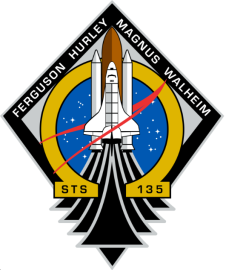You are currently browsing the monthly archive for June 2013.
WELCOME TO WEEK 29!


There have been many topics covered over the past year since the inception of this microbiology based twitter journal club. Now it is time to go out of this world and look at how spaceflight affects microbial communities! With the increasing speculation of manned missions to mars, it is imperative that we know how/if bacteria will be affected by space flight. The ARTICLE focusses on P. aeruginosa biofilm formation in zero gravity when travelling on two STS missions. We will meet on the 25th of June (8pm BST) to discuss our thoughts and give insights to the discussion points listed below:
Aled – @sbi5ar
ABSTRACT:
Understanding the effects of spaceflight on microbial communities is crucial for the success of long-term, manned space missions. Surface-associated bacterial communities, known as biofilms, were abundant on the Mir space station and continue to be a challenge on the International Space Station. The health and safety hazards linked to the development of biofilms are of particular concern due to the suppression of immune function observed during spaceflight. While planktonic cultures of microbes have indicated that spaceflight can lead to increases in growth and virulence, the effects of spaceflight on biofilm development and physiology remain unclear. To address this issue, Pseudomonas aeruginosa was cultured during two Space Shuttle Atlantis missions: STS-132 and STS-135, and the biofilms formed during spaceflight were characterized. Spaceflight was observed to increase the number of viable cells, biofilm biomass, and thickness relative to normal gravity controls. Moreover, the biofilms formed during spaceflight exhibited a column-and-canopy structure that has not been observed on Earth. The increase in the amount of biofilms and the formation of the novel architecture during spaceflight were observed to be independent of carbon source and phosphate concentrations in the media. However, flagella-driven motility was shown to be essential for the formation of this biofilm architecture during spaceflight. These findings represent the first evidence that spaceflight affects community-level behaviors of bacteria and highlight the importance of understanding how both harmful and beneficial human-microbe interactions may be altered during spaceflight.
DISCUSSION POINTS:
- Was the article well written with enough background information?
- Were the methodologies used sufficient to derive the conclusions of the paper?
- What experiments would have furthered the conclusions?
- What are the large scale implications (if any) back on earth?
- What is the future of microbial space travel?
The paper for the next #microtwjc is http://mbio.asm.org/content/3/1/e00305-11
The study by Price et al. highlights the emergence in multidrug resistance S. aureus in a livestock associated lineage, and the subsequent transmission to humans. Of note, the ancestral host of the lineage is predicted to be originally human, raising questions about agricultural practices that may have contributed to the emergence of drug resistance.
There is also a commentary on the paper here: http://mbio.asm.org/content/3/2/e00082-12.full
Looking forward to a good discussion.
Paul
